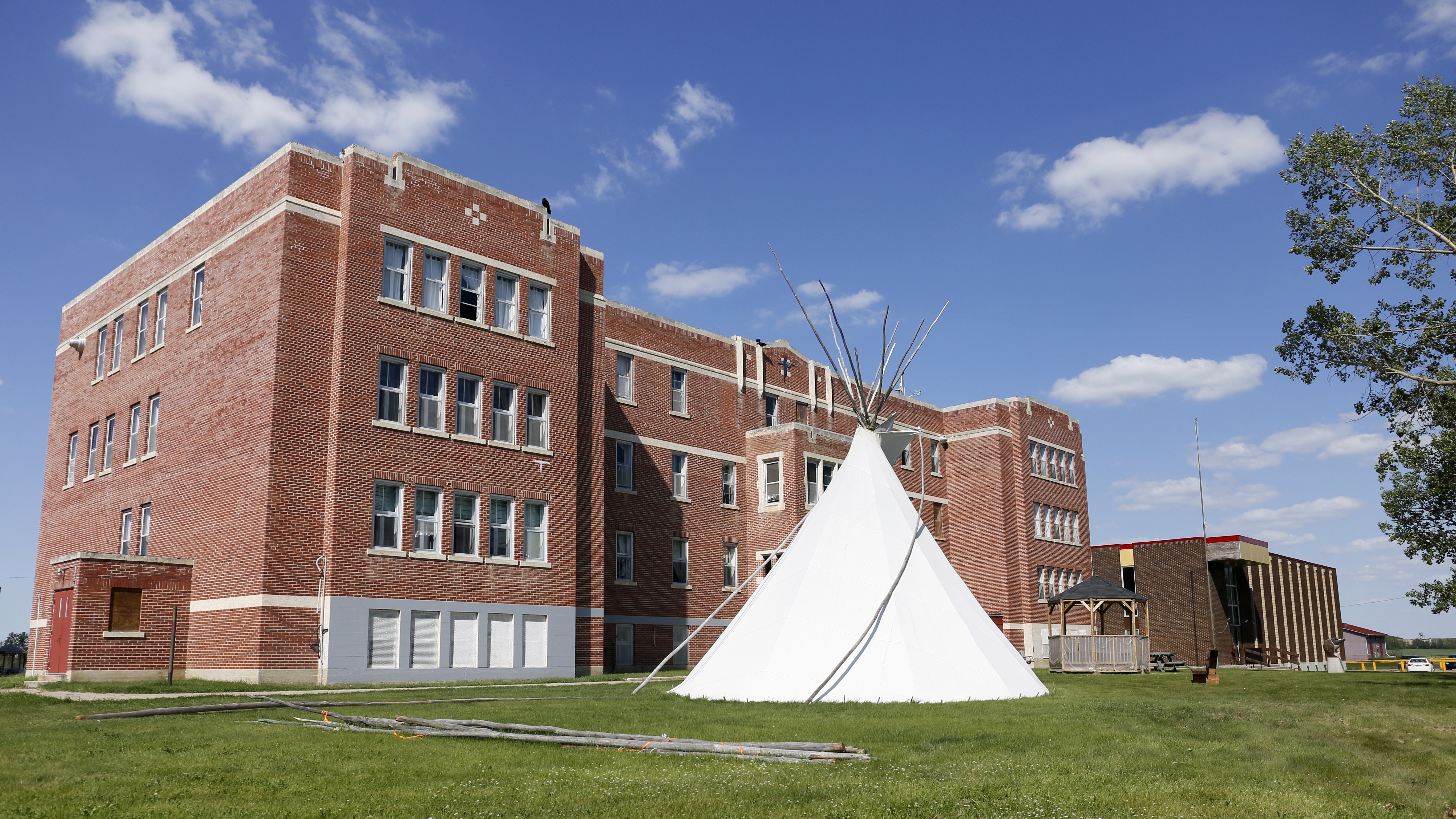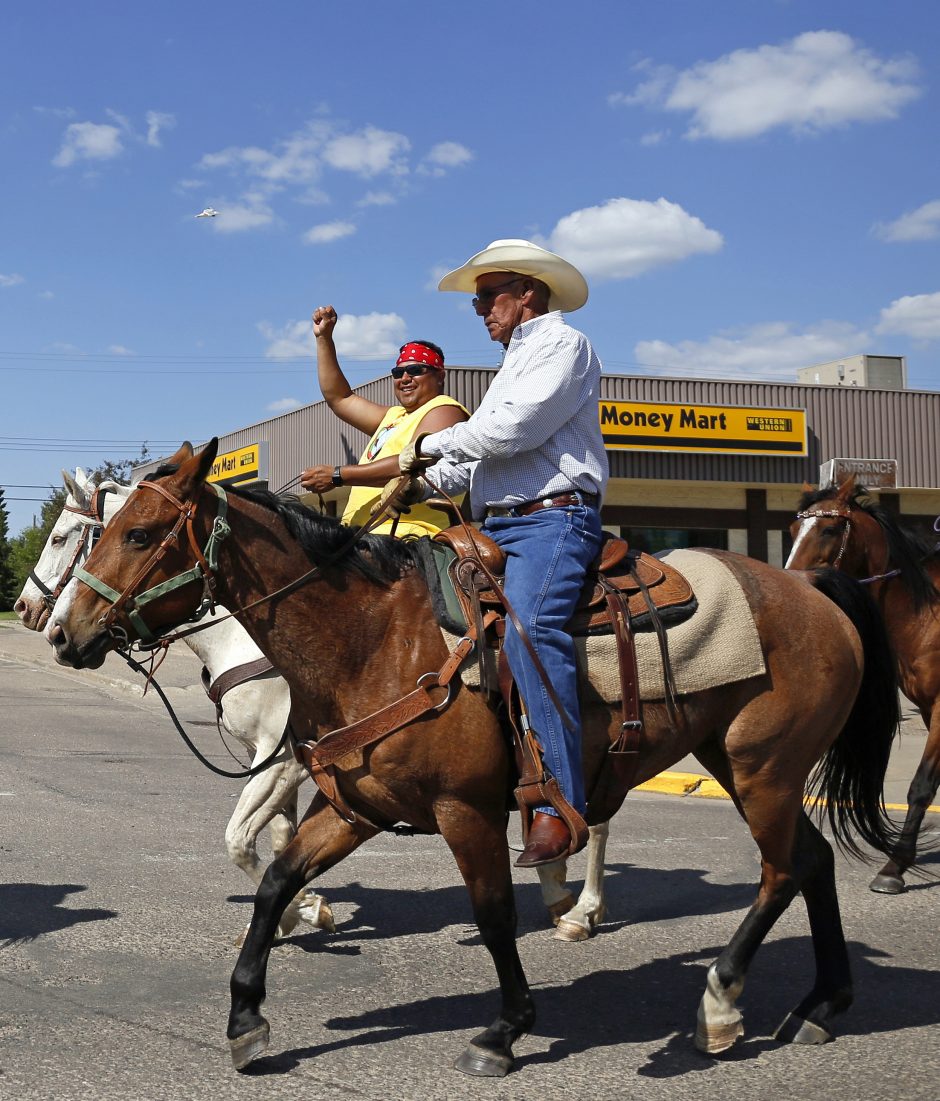June 22, 2018
Ben Badger was riding on his horse for Kehewin Cree Nation’s first Seeking Healing Ride when he rode by the property of a man who was involved in the death of Badger's brother Johnny in 2016.
“If he would have come out, I would have shook his hand,” Badger said while watering his horse on a break during the 40-kilometre trek from the Kehewin Cree Nation reserve to St. Paul, Alta.
“He didn’t come out, though.”
That willingness to forgive doesn't mean he forgives his brother's death. It means he doesn't want the next generation — his kids, his brother's kids or the other man's kids — to grow up with that anger.
The forgiveness was the purpose of the journey in the first place. "In order to heal, we need to forgive and let go," Badger said. "[Things that] need forgiving are still happening in our tribes and we need to stop those learned behaviours."
He was inspired by the film Dakota 38, a documentary that follows Jim Miller on a more than 500-kilometre horseback trek across South Dakota to Minnesota to remember 38 Indigenous warriors hanged in the largest mass execution in U.S. history.
A key goal of the Kehewin journey was to help address intergenerational trauma in their community caused by the residential school system.
“There is a lot of unresolved trauma, a lot of hurt that still exists, even in my generation,” Badger said.
The Seeking Healing Ride began at Kehewin Lake, just south of Bonnyville, at 8 a.m. Wednesday. Drummers and singers lined up to bless the five riders on their trip, while the horses circled the singers.
Runners and walkers had a water blessing near the lake, setting off shortly after.
Others who wanted to complete the trip, but couldn’t run or ride, drove in the convoy of vehicles behind the horseback riders.

An hour into the journey, the temperature had soared to 25 C, later moving up to as high as 31 C. The riders and runners continued, spirits high.
“I have to keep in mind the people that we’re running for,” said Shana Dion, one of the runners. “This is nothing compared to what they went through in residential school.
“So we can do this.”
Dion’s father, her ohtâwîmâw, went to the Blue Quills residential school just outside of St. Paul. The school operated until 1971 when it was turned into a Indigenous education centre for Indigenous people.
Dion and her son, 16-year-old Delton Owens, ran for her dad, Owens’s mosôm. “My grandpa is a huge role model to me,” Owens said. “I think this a dream come true for him. I really do.”
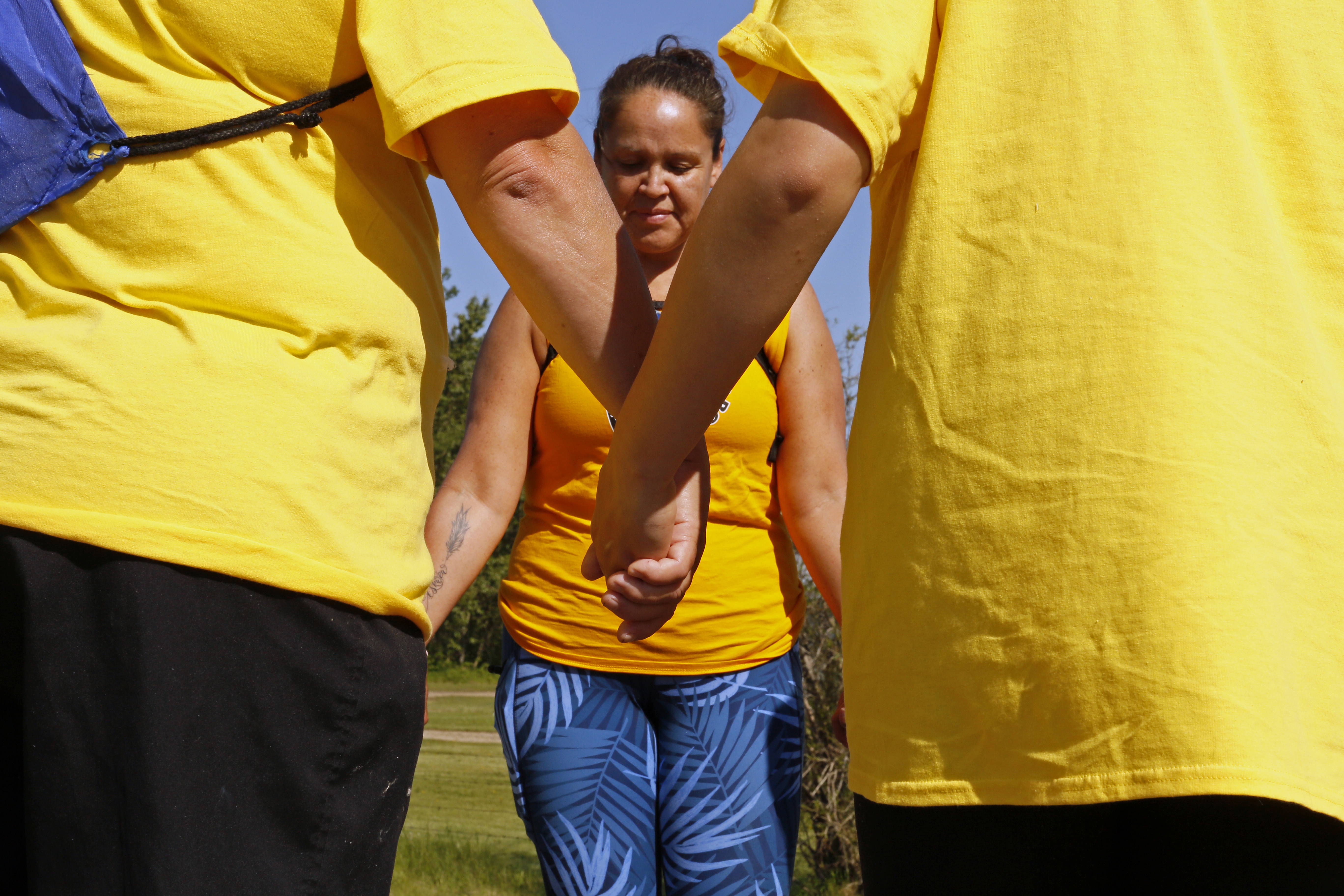
The two, along with six others, ran on the hot pavement and encouraged one another to keep up the pace. The heat poured on the runners but Dion felt it was a test.
“It could be a lot worse,” she said while taking a short break. For instance, it could have been -30 C, she said.
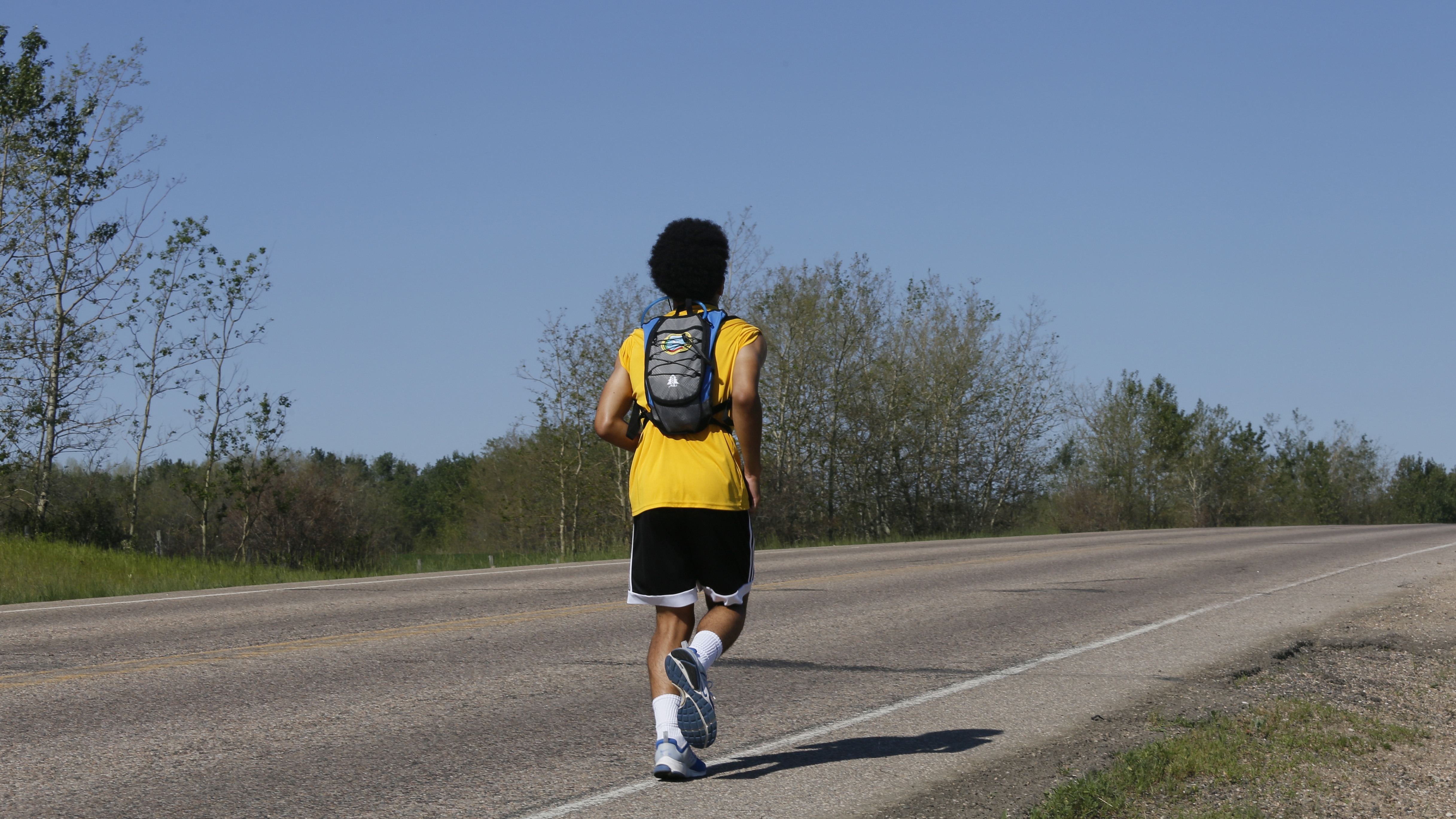
But those types of cold temperatures are what Jim Miller rides through every year during his ride in December. Miller made the trip to St. Paul from South Dakota to be a part of Kehewin’s inaugural ride. He calls Badger his nephew, who first came to visit him in 2016 to learn about the ride.
It was there that Badger decided he could forgive the man who was involved in his brother's death to stop the endless cycle of anger.
Miller said that willingness to forgive is what the healing ride is all about.
“It’s very damn important,” he said. “Our kids are at stake.”

The runners, walkers and riders all met at Dog Rump Creek near St. Paul for lunch.
There, members of Kehewin Cree Nation were welcomed onto private land and had lunch with people in the community.
Doctors, psychologists and faith keepers rounded out the lunch gathering. Badger said they were invited because of the trauma the community is facing. They may not need the help yet, but when Kehewin Cree Nation does need it, the relationships will have been built.
Local and provincial politicians rounded out the group. Their participation was considered important for relationship building.
“What we need is policy and change,” Badger said. “We hear people talking about wanting to help, let’s talk about the system that is feeding into this hurt.”
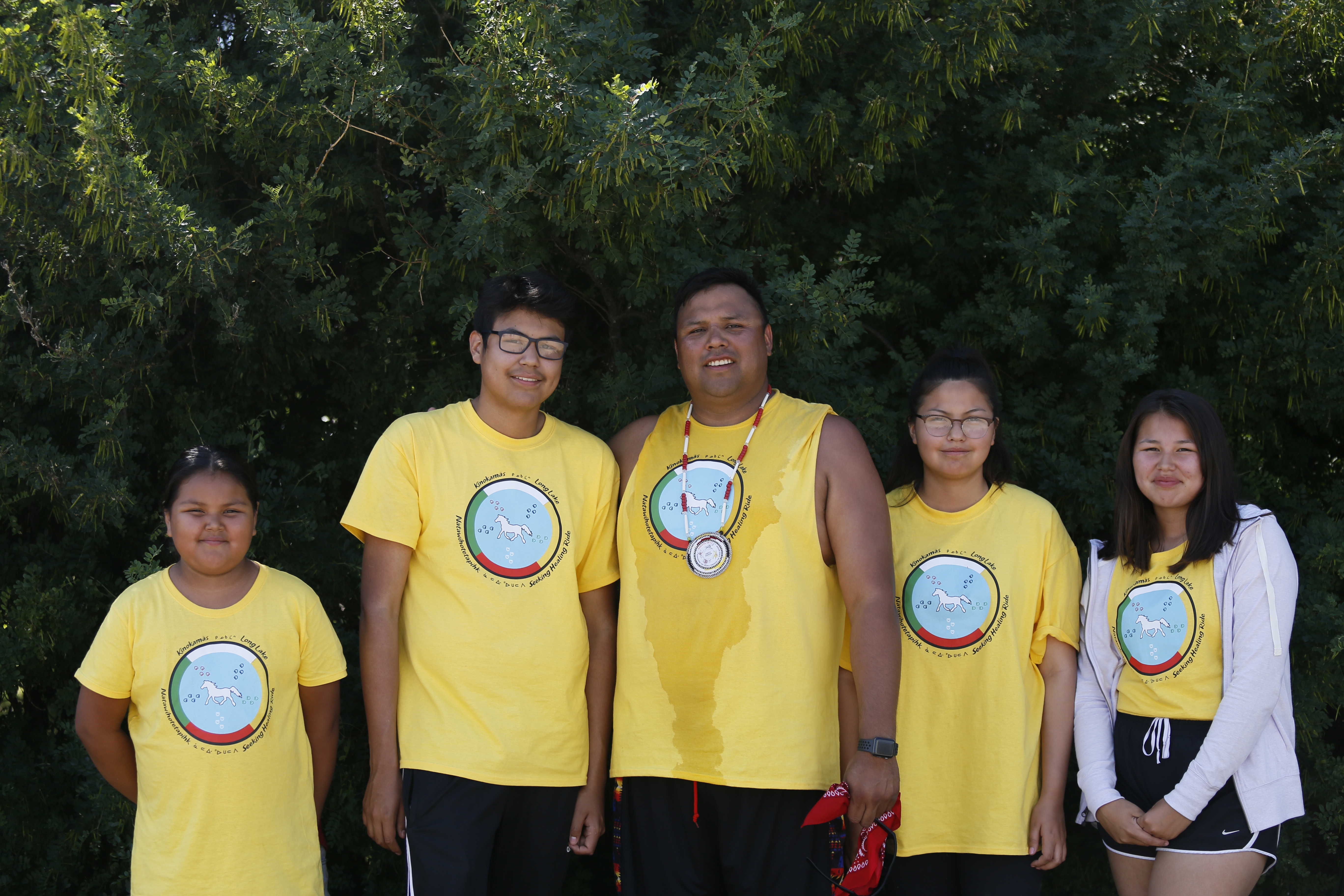
Miller, who led the pre-meal prayer and smudging — burning of sweetgrass in a ceremonial process — for the horses, riders and runners, said he wasn’t sure what to expect from the lunch.
“It blessed my heart and warmed my heart to see all the people at the halfway point,” he said. “The whites, the Indians, we all came together.”
After lunch, the convoy of horses, from Badger's uncle Adrian, picked up three more riders and continued on their trek. The temperature rose and bodies were sore, but they carried on.
“The importance of this ride is about my commitment to sacrifice,” Badger said. “We get too comfortable just keeping things the way they are. When we do that, it just allows other people to get hurt.”
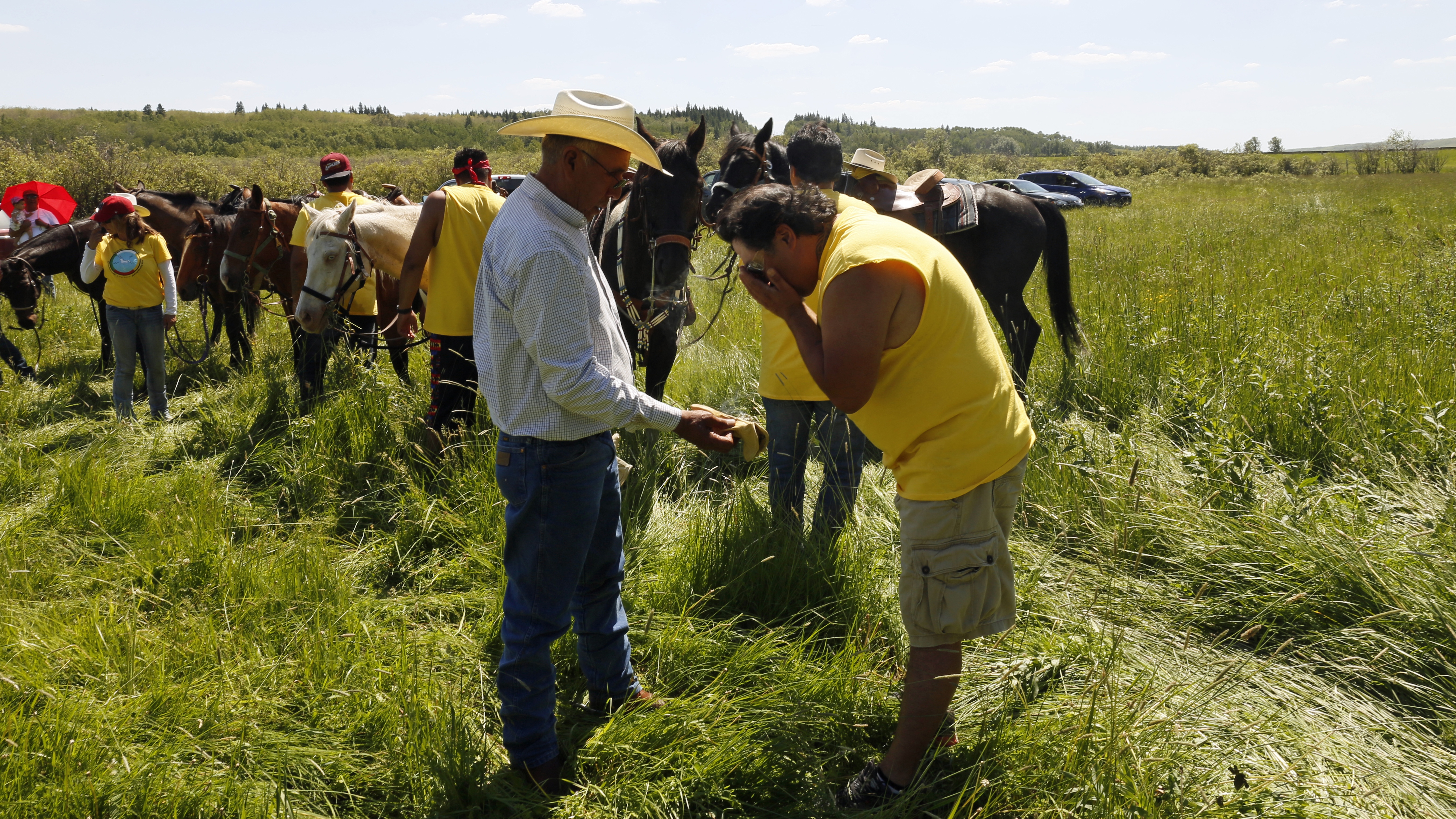
The next stop was the Bethel Family Worship Centre on the outskirts of St. Paul. There, the members of Kehewin were welcomed into the town. It was an important and symbolic gesture for a community that has never quite felt welcome in the town.
“I was never ever welcomed in St. Paul,” Badger said. “One of the only ways we’ll see reconciliation happen is when we share the land again.”
Four short prayers were recited in the church — one each in English, French, Ukrainian and Cree — to welcome Kehewin Cree Nation into the community and as they continued on their journey.
“I think this is a really huge moment for everyone who had to go through that,” Owens said.
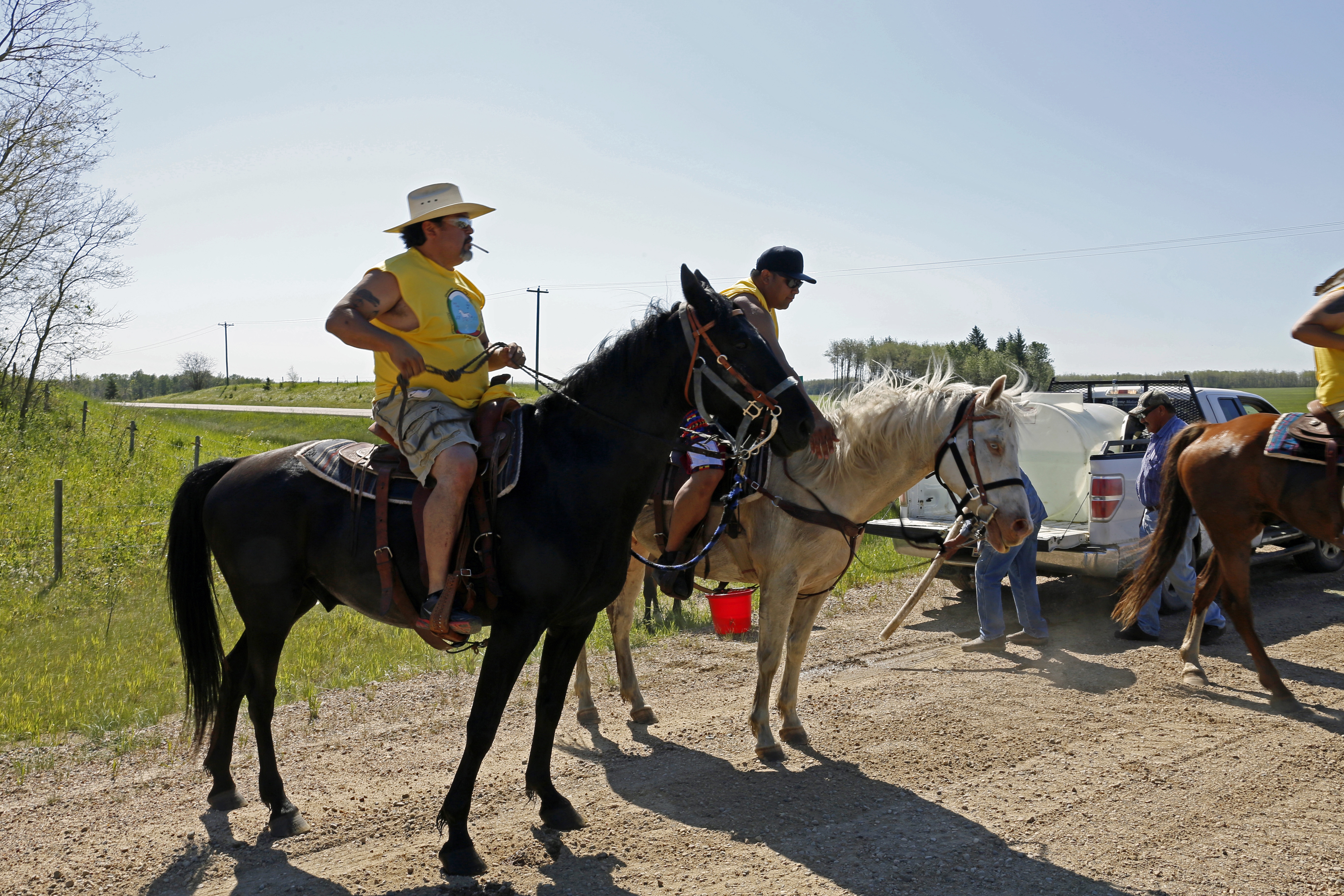
The procession continued through town. Cars honked in support while the riders waved to kids playing basketball at a local school. Across the street, the St. Paul Cathedral church towers over them.
“When you know the truth, it’s very difficult to step back and close your eyes about it,” said Maureen Miller, mayor of St. Paul. “We cannot move forward unless we know the truth.”
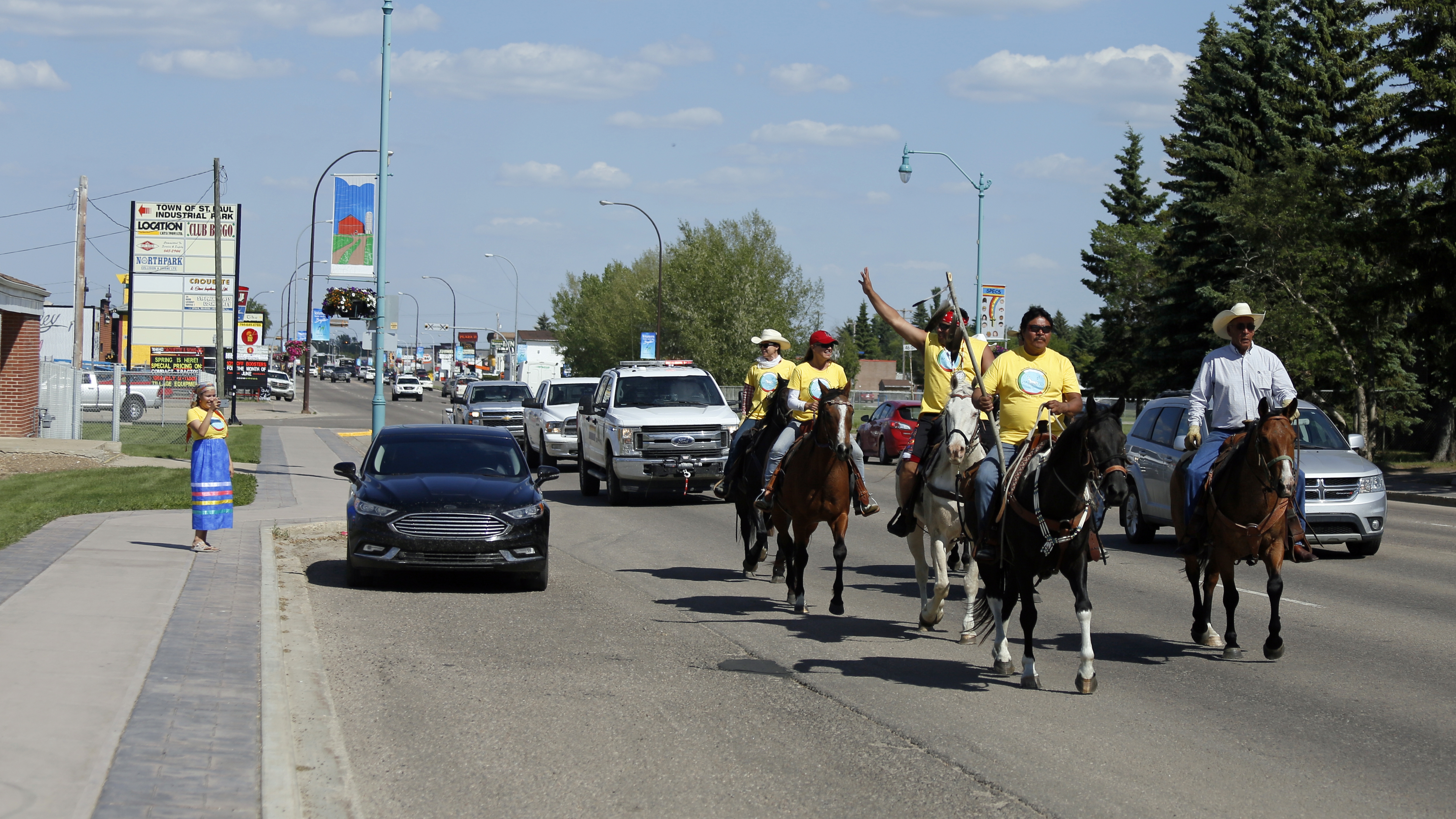
Riders concluded their healing journey at Blue Quills College, the former residential school which closed in 1971. The brutalist architecture reminds of what used to happen here — but the smiling Indigenous people on the campus now show more about their resiliency and self-empowerment.
“The ancestors are behind me and I know they are watching us and that they’re pushing us along,” Dion said. “They’re coming right behind me and saying, ‘ahkameyimok. Keep going. You’ve got to do this.’
“I hope that they’re proud of what we’re doing here today.”
